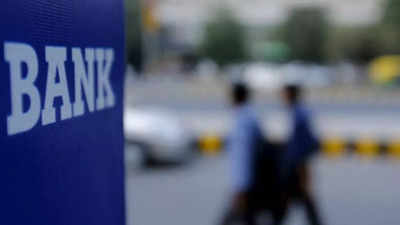
MUMBAI: The Reserve Bank on Thursday said bad loans of banks are expected to decline to 5.3 per cent of total advances by March 2023 from a six-year low on account of declining trend in credit growth and stock of NPAs. Is.
However, it cautioned that the bad debt ratio could rise if the macroeconomic environment worsens.
The gross non-performing assets (GNPA) ratio of banks fell to a six-year low of 5.9 per cent in March 2022.
Scheduled commercial sanctions (SCBs) to GNPA ratio stood at 7.4 per cent in March 2021.
The support measures provided by the regulator during the COVID-19 pandemic helped in curbing the GNPA ratio of SCBs, even with the cessation of regulatory relief.
“Under the assumption of no further regulatory relief as well as without taking into account the potential impact of stressed asset purchases by NARCL, the stress tests indicate that the GNPA ratio of all SCBs has improved from 5.9 per cent in March 2022 to 5.3 per cent by March higher expected under the 2023 baseline scenario, driven by Bank credit Among other factors, the stock of GNPAs has a rising and declining trend,” the RBI said.
The Rs 6,000-crore National Asset Reconstruction Company (NARCL) or Bad Bank is expected to handle the first set of non-performing accounts of banks in July.
In its 25th issue of the Financial Stability Report (FSR) released on Thursday, the RBI further said that if the macroeconomic environment worsens into a moderate or severe stress scenario, the GNPA ratio may rise to 6.2 per cent and 8.3 per cent, respectively.
“Even at the bank group level, the GNPA ratio in the baseline scenario may come down by March 2023,” it said.
However, in the scenario of severe stress, the GNPA ratio of public sector banks (PSBs) may increase from 7.6 per cent in March 2022 to 10.5 per cent a year later. The GNPA ratio will increase from 3.7 per cent to 5.7 per cent for private sector banks and from 2.8 per cent to 4 per cent for foreign banks in the same period.
According to the FSR, banks as well as non-banking financial institutions have adequate capital buffers to withstand the shocks.
Among financial institutions, banks have reduced the GNPA ratio through recovery, write-off and reduction in slippage.
RBI noted that the GNPA ratio is at its lowest level in six years and bank credit growth is in double digits after a long gap, with modest return to profitability.
According to the FSR, macro-stress tests for credit risk suggest that SCBs are well capitalized and all banks will be able to adhere to minimum capital requirements even in adverse stress scenarios.
On banking credit, the report said that the deeper profile of bank credit indicates that most of the revival was in the second half of 2021-22, and has continued so far during the current financial year.
While personal credit remained a major component, credit demand from the industrial sector revived after falling in 2020-21 as well as in the first half of 2021-22.
“A significant portion of new industrial loans were given in the form of working capital loans. Credit growth to the private corporate sector turned positive after two consecutive years of deceleration and divergence,” it said.
Importantly, banks’ balance sheets remain strong, there has been a decline in non-performing assets for both wholesale and retail loans, and capital buffers are adequate, it added.
The central bank publishes the Financial Stability Report (FSR) every year and includes contributions from all financial sector regulators.
Accordingly, it reflects the collective assessment of the Financial Stability and Development Council (FSDC-SC) sub-committee on the risks to the stability of the Indian financial system, the RBI said.
FacebookTwitterinstagramKu APPyoutube